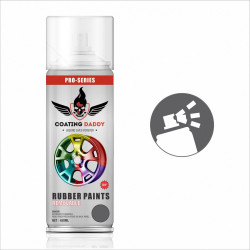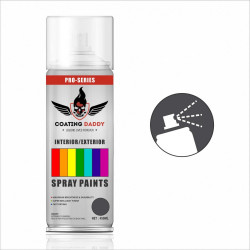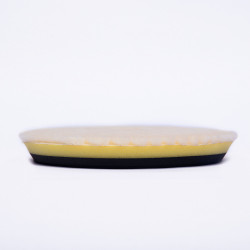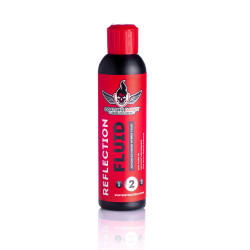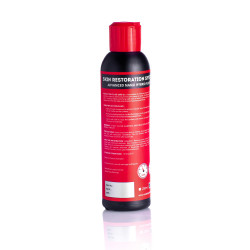
In the world of car detailing and paint correction, the polishing pad you choose can be as critical as the polish itself. Whether you're an enthusiast, a professional detailer, or someone new to detailing, understanding the differences between foam, wool, and microfiber towel is essential. Each pad type offers unique cutting and finishing characteristics, and the right choice can mean the difference between a swirl-free, glossy finish or unsightly holograms and scratches.
In this article, we'll explore the strengths and weaknesses of each type—foam, wool, and microfiber—and guide you on how to choose the right pad for your specific needs.
Why the Polishing Pad Matters
Before diving into types, let's answer a basic question: why does the pad matter so much?
A polishing pad acts as the medium between your polishing machine and the car's paint. Its primary jobs include:
- Holding the polish or compound
- Controlling heat generation
- Managing cutting power (abrasion)
- Influencing the final finish quality
Choosing the wrong pad can cause excessive paint removal, create swirl marks, or leave an uneven finish—even if you're using the best polish on the market.
1. Foam Pads: Versatile and Precise
Overview
Foam pads are the most common choice for detailers. They come in different densities and structures designed for various tasks, from heavy cutting to ultra-fine finishing.
Pros:
- Highly versatile
- Excellent finishing capabilities
- Available in a wide range of hardness and cell structures
- Generally safer and more forgiving, especially for beginners
Cons:
- Lower cutting power compared to wool and microfiber
- Can become saturated quickly with polish
When to Use Foam Pads
Foam pads are ideal when you:
- Need to finish to a high gloss
- Are working on softer or delicate paints
- Want to remove light to moderate defects
- Are new to machine polishing and need something more forgiving
Tip: Modern foam pads often use an open-cell structure, which helps manage heat and reduce the risk of paint burning.
2. Wool Pads: Aggressive Cutting Power
Overview
Wool pads are made from natural wool fibers, synthetic fibers, or blends. They're known for fast defect removal and high cutting ability.
Pros:
- Excellent at removing deep scratches, oxidation, and heavy swirl marks
- Effective on harder paints or gel coats (like boats)
- Tend to run cooler due to open fiber structure
Cons:
- Can leave swirl marks or holograms that require follow-up polishing
- Less suitable for finishing
- May shed fibers during use
When to Use Wool Pads
Choose wool pads when:
- Working on heavily oxidized or scratched surfaces
- Correcting harder paint systems
- Performing a two-step process where you'll follow with a finishing pad
Tip: Wool pads work best on rotary polishers, but can also be used with dual-action machines for less aggressive correction.
3. Microfiber Pads: Balance of Cut and Finish
Overview
Microfiber pads have a foam backing with microfiber fabric on top. They combine the cutting ability of wool with a better finishing quality.
Pros:
- Great cutting power, often faster than foam
- Better finishing than wool pads
- Less heat generation than wool due to microfiber's cooling properties
Cons:
- Can clog quickly with product or paint residue
- Require proper cleaning during and after polishing
- Still may create micro-marring on softer paints
When to Use Microfiber Pads
Microfiber pads shine when:
- Performing one-step polishing with significant defect removal
- Working on medium to hard paints
- Need a balance of correction and gloss
Tip: Keep a soft brush or pad spur handy to clean microfiber pads often to maintain performance.
4. Cutting vs. Polishing vs. Finishing Pads
Each pad type—foam, wool, microfiber—can be categorized further:
Cutting Pads
- Stiffer or coarser structure
- Designed to remove defects quickly
- Examples: heavy-cut foam pads, coarse wool pads, or cutting microfiber pads
Polishing Pads
- Medium density and abrasiveness
- Balance of cut and finish
- Used for moderate swirl removal and gloss enhancement
Finishing Pads
- Soft, less abrasive
- Focus purely on refining the finish and applying glazes or sealants
- Examples: ultra-soft foam pads
Tip: Think of these pads as part of a system. Even after aggressive cutting, you'll usually need to refine the finish with a softer pad and polish.
5. Factors to Consider When Choosing Your Pad
Selecting the right pad isn't just about type; several factors play a role:
Paint Hardness
- Harder paints (e.g., German cars) often need more aggressive pads
- Softer paints (e.g., Japanese cars) may mar easily, so softer pads work better
Machine Type
- Rotary polishers: pair well with wool pads for heavy correction
- Dual-action polishers: often better with foam or microfiber for safety and versatility
Type of Defects
- Deep scratches and heavy oxidation: wool or cutting microfiber pads
- Light swirls and holograms: polishing or finishing foam pads
Finish Goals
- Want maximum gloss? Finish with a soft foam pad
- Need quick correction? Start with wool or microfiber
6. Cleaning and Maintenance
Proper pad care extends lifespan and ensures consistent results.
For Foam Pads:
- Wash with warm water and mild soap
- Squeeze out polish residue by hand
- Let air dry
For Wool Pads:
- Clean with a pad spur during use to remove buildup
- Wash gently to avoid pulling out fibers
For Microfiber Pads:
- Use compressed air or a soft brush during polishing
- Wash after use and let dry completely
Tip: Always have multiple pads on hand to swap out when one becomes saturated or overheated.
7. Common Mistakes to Avoid
- Using the wrong pad for the job: Overly aggressive pads on soft paint can cause damage.
- Not cleaning pads often enough: Clogged pads lose effectiveness and can mar paint.
- Skipping test spots: Always test on a small area to see how the pad/polish combo performs.
- Overloading pads with product: Use only enough polish to cover the pad's face lightly.
Conclusion: Which Pad Should You Choose?
The best pad depends on your paint, defects, polishing machine, and desired outcome:
- Foam Pads: Best for beginners and finishing work; gentle and versatile.
- Wool Pads: Great for aggressive correction on hard paints and oxidation.
- Microfiber Pads: Excellent middle ground; good cut with better finish than wool.
Think of pads as tools in your detailing toolbox—sometimes you'll need more than one to achieve a flawless finish.
Final Thoughts
Whether you're correcting years of neglect on an old project car or adding the final gloss to a weekend cruiser, choosing the right polishing pad is a vital skill. Experiment with different combinations, stay patient, and remember: the goal isn't just to remove defects, but to create a finish you're proud of.
 +1 63149-00171
+1 63149-00171 +91-120-4061367
+91-120-4061367








